
A symphony is an extended musical composition in Western classical music, most often for orchestra. Although the term has had many meanings from its origins in the ancient Greek era, by the late 18th century the word had taken on the meaning common today: a work usually consisting of multiple distinct sections or movements, often four, with the first movement in sonata form. Symphonies are almost always scored for an orchestra consisting of a string section, brass, woodwind, and percussion instruments which altogether number about 30 to 100 musicians. Symphonies are notated in a musical score, which contains all the instrument parts. Orchestral musicians play from parts which contain just the notated music for their own instrument. Some symphonies also contain vocal parts.
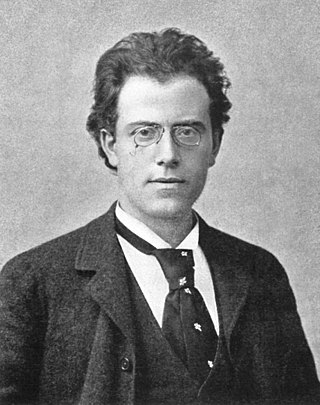
The Symphony No. 1 in D major by Gustav Mahler was mainly composed between late 1887 and March 1888, though it incorporates music Mahler had composed for previous works. It was composed while Mahler was second conductor at the Leipzig Opera in Germany. Although in his letters Mahler almost always referred to the work as a symphony, the first two performances described it as a symphonic poem and as a tone poem in symphonic form, respectively. The work was premièred at the Vigadó Concert Hall in Budapest, Hungary, in 1889, but was not well-received. Mahler made some major revisions for the second performance, given at Hamburg, Germany, in October 1893; further alterations were made in the years prior to the first publication, in late 1898. Some modern performances and recordings give the work the title Titan, despite the fact that Mahler only used this label for the second and third performances, and never after the work had reached its definitive four-movement form in 1896.

Karl-Birger Blomdahl was a Swedish composer and conductor born in Växjö. He was educated in biochemistry, but was primarily active in music and by his experimental compositions he became one of the big names in Swedish modernism. His teachers included Hilding Rosenberg. He died in Kungsängen, Stockholm.

Joseph Haydn's Symphony No. 13 in D major was written in 1763 for the orchestra of Haydn's patron, Prince Nikolaus Esterházy, in Eisenstadt.

The Bassoon Concerto in B-flat major, K. 191/186e, is a bassoon concerto written in 1774 by Wolfgang Amadeus Mozart. It is the most often performed and studied piece in the entire bassoon repertory. Nearly all professional bassoonists will perform the piece at some stage in their career, and it is probably the most commonly requested piece in orchestral auditions – it is usually requested that the player perform excerpts from the concerto's first two movements in every audition.
Symphony No. 6 "Sinfonia semplice", FS 116, was Danish composer Carl Nielsen's last symphony.
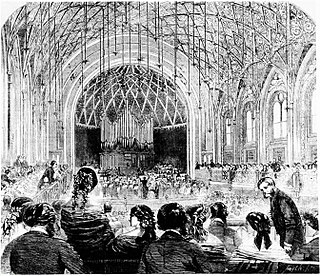
The Symphony No. 3 in C minor, Op. 78, was completed by Camille Saint-Saëns in 1886 at the peak of his artistic career. It is popularly known as the Organ Symphony, since, unusually for a late-Romantic symphony, two of the four sections use the pipe organ. The composer inscribed it as: Symphonie No. 3 "avec orgue".
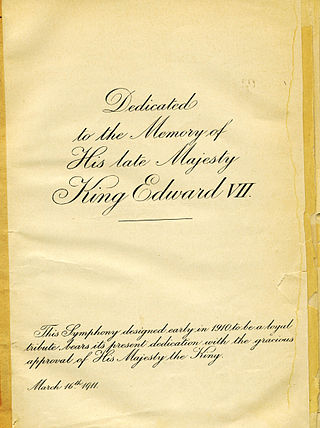
Sir Edward Elgar's Symphony No. 2 in E♭ major, Op. 63, was completed on 28 February 1911 and was premiered at the London Musical Festival at the Queen's Hall by the Queen's Hall Orchestra on 24 May 1911 with the composer conducting. The work, which Elgar called "the passionate pilgrimage of the soul", was his last completed symphony; the composition of his Symphony No. 3, begun in 1933, was cut short by his death in 1934.
Robert William Smith was an American composer, arranger, and teacher.
An Alpine Symphony, Op. 64, is a tone poem for large orchestra written by German composer Richard Strauss in 1915. It is one of Strauss's largest non-operatic works; the score calls for about 125 players and a typical performance usually lasts around 50 minutes. The program of An Alpine Symphony depicts the experiences of eleven hours spent climbing an Alpine mountain.

The Symphony No. 3 in C major, Op. 52, is a three-movement work for orchestra written from 1904 to 1907 by the Finnish composer Jean Sibelius.
The Symphony No. 3 in E♭ major, Op. 97, also known as the Rhenish, is the last symphony composed by Robert Schumann, although not the last published. It was composed from 2 November to 9 December 1850 and premiered on 6 February 1851 in Düsseldorf, conducted by Schumann himself, and was received with mixed reviews, "ranging from praise without qualification to bewilderment". However, according to A. Peter Brown, members of the audience applauded between every movement, and especially at the end of the work when the orchestra joined them in congratulating Schumann by shouting "hurrah!".

Afro-American Symphony, also known as Symphony No. 1"Afro-American" and Symphony No. 1 in A-flat major, is a 1930 composition by William Grant Still, the first symphony written by an African American and performed for a United States audience by a leading orchestra. It was premiered in 1931 by the Rochester Philharmonic Orchestra and later published in 1935. It is a symphonic piece for full orchestra, including celeste, harp, and tenor banjo. It combines a fairly traditional symphonic form with blues progressions and rhythms that were characteristic of popular African-American music at the time. This combination expressed Still's integration of black culture into the classical forms. Still used quotes from four poems by early 20th-century African-American poet Paul Laurence Dunbar as epigraphs for each symphonic movement. The symphony is about twenty-four minutes long.
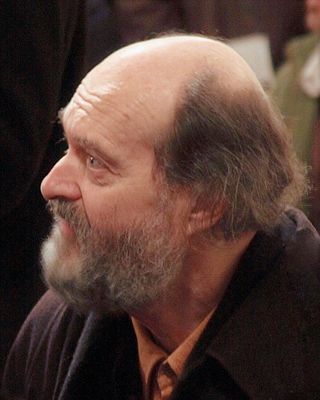
Symphony No. 4 Los Angeles is the fourth symphony by Estonian composer Arvo Pärt. It is the first of his symphonies to be written post-1976 and is in his signature tintinnabuli style. It is the first of his pieces that focuses on larger scale, instrumental tintinnabulation. Previous pieces, such as Summa and Für Alina, were typically written for SATB choir or a smaller number of instruments. Composed in 2008, and premiered 10 January 2009, Symphony No. 4 was nominated for a 2010 Grammy Award for Best Classical Contemporary Composition, although he did not receive the award.

Stanley Kubrick's A Clockwork Orange is a soundtrack album released in 1972 by Warner Bros. Records, featuring music from Stanley Kubrick's 1971 film A Clockwork Orange. It includes pieces of classical music and electronic music by American composer and musician Wendy Carlos, whom Kubrick hired to write the film's original score. Music that Carlos recorded for the film that remained unreleased, including complete tracks, was released three months later on her album Walter Carlos' Clockwork Orange.
The Symphony No. 3, Circus Maximus, is a composition for wind ensemble in eight movements by the American composer John Corigliano. The work was commissioned by the University of Texas at Austin Butler School of Music for the University of Texas Wind Ensemble. It was given its world premiere by the University of Texas Wind Ensemble under their conductor Jerry Junkin at the Bass Concert Hall in the University of Texas Performing Arts Center on February 16, 2005. The symphony is dedicated to Junkin and is the composer's first piece written specifically for concert band.

Richard Strauss composed his Symphony No. 1 in D minor in 1880 when he was just 16 years old. It consists of four movements, and lasts about 34 minutes. Although Strauss did not give a number to the symphony, it is often referred to as his First Symphony. It was premiered on 30 March 1881 at the Munich Academy of Music under the baton of Hermann Levi.
Symphony No. 5 Le grand Inconnu is a choral symphony by the Scottish composer James MacMillan. The work was commissioned by the Genesis Foundation. It was first performed by the U.K.-based choir The Sixteen, the Genesis Sixteen chamber choir, and Scottish Chamber Orchestra conducted by Harry Christophers in Usher Hall, Edinburgh, on 17 August 2019.
The Short Symphony, or Symphony No. 2, is a symphony written by the American composer Aaron Copland from 1931 to 1933. The name derives from the symphony's short length of only 15 minutes. The work is dedicated to Copland's friend, the Mexican composer and conductor Carlos Chávez. The symphony's first movement is in sonata-allegro form, and its slow second movement follows an adapted ternary form. The third movement resembles the sonata-allegro but has indications of cyclic form. The composition contains complex rhythms and polyharmonies, and it incorporates the composer's emerging interest in serialism as well as influences from Mexican music and German cinema. The symphony includes scoring for a heckelphone and a piano while omitting trombones and a percussion section. Copland later arranged the symphony as a sextet.
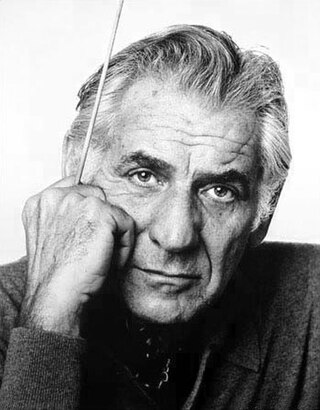
Divertimento, or Divertimento for Orchestra, is a suite of eight orchestral bagatelles by American composer Leonard Bernstein. Completed in 1980 and written to celebrate the centenary of the Boston Symphony Orchestra, it is well-known for featuring the notes B and C in most of its melodic material.












